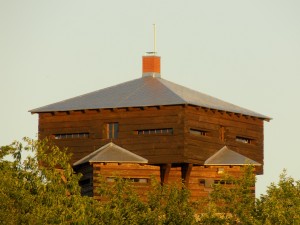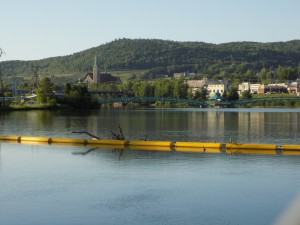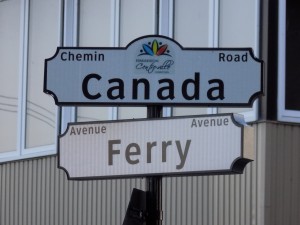Neither American or Canadian: the Republic of Madawaska
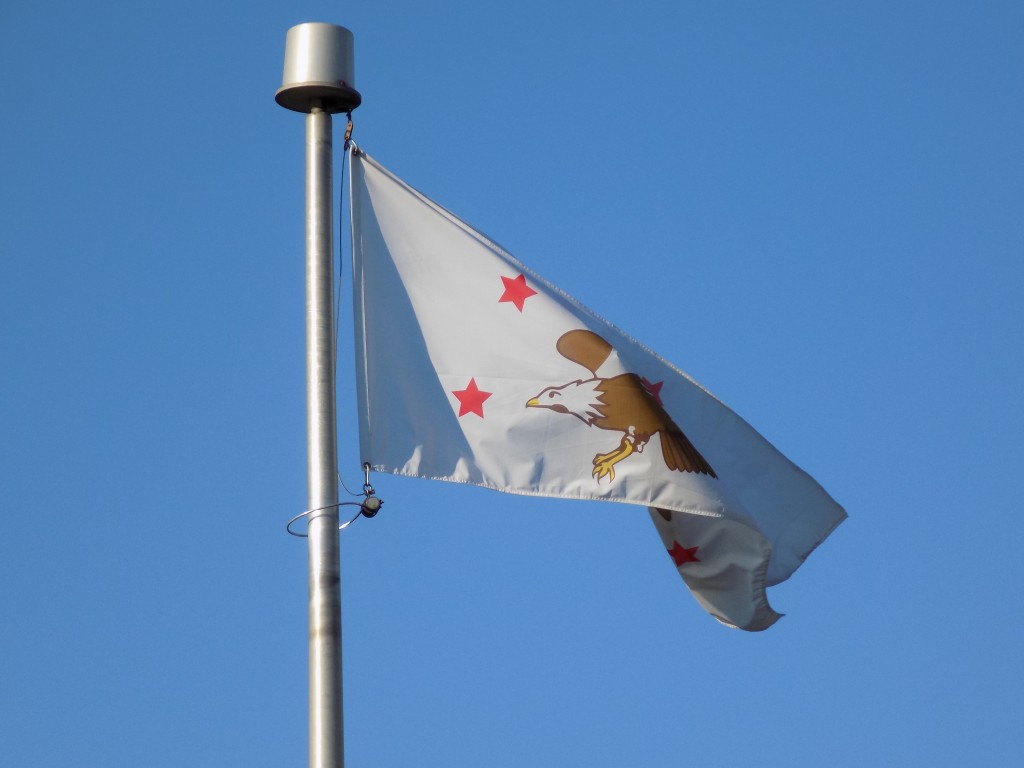
The Republic of Madawaska flag flies in the capital city of Edmundston, New Brunswick. Photo by James Morgan
In eastern Ontario and the North Country, most people are simply just Canadian or American. Further east in northwestern New Brunswick, northeastern Maine, and the Lac Temiscouata region of Quebec, the Canada-US border has been less-defined throughout history. The area is known as the Republic of Madawaska, and it was actually an unrecognized country that existed from 1827 to 1842.
The 1783 Treaty of Paris established the boundary between the United States and the British North American colonies, but it ignored the area around the confluence of the St. John and Madawaska Rivers. In 1817, John Baker settled nearby on the New Brunswick side and in 1825, petitioned the US government for addition to the State of Maine. His wife Sophie made a homemade American flag and they raised it where Baker Brook meets the St. John River on July 4, 1827. After word got out of John Baker’s plan to proclaim the Republic of Madawaska on August 10, he was jailed and fined for sedition. In 1831, Baker’s petition to join Maine was rejected.
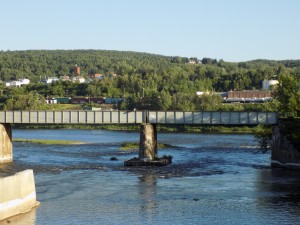
The Madawaska River flows into the St. John River in Edmundston, New Brunswick. The town in the background is Madawaska, Maine. Photo by James Morgan
The boundary dispute led to the Aroostook War between Britain and the U.S. from 1838 to 1839. The war was never actually officially declared and no battles ever took place. However, the British did plan to defend their territory. Fort du Petit-Sault was built in Edmundston, New Brunswick. A reconstruction of the blockhouse stands today as a museum. In 1842, the Webster-Ashburton Treaty was signed, solving the boundary question. The territory within modern Canada was first part of Canada East (present day Quebec), but most of it was transferred to New Brunswick in the 1850s.
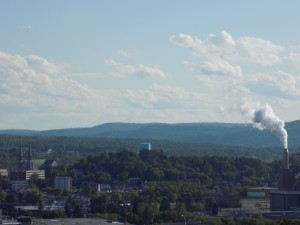
Edmundston, New Brunswick is the unofficial capital of the unofficial Republic of Madawaska. Photo by James Morgan
The Republic of Madawaska continues in a mythological sense. Its largest community is Edmundston. The city is considered the capital of Madawaska and its Mayor the honorary President. Edmundston is connected to the neighboring town of Madawaska, Maine by a bridge over the St. John River. There are large paper mills on both sides and pipes and wires exchange power and materials between the plants.
A Madawaska flag was created in 1938. With five red stars and a bald eagle on a white background, it looks much more American than a reflection of the mostly French heritage of the region. The republic is the namesake of the de la République Provincial Park near Edmundston. The signature food of Madawaska is the ploye, a crêpe-like pancake made from buckwheat flour that is not flipped over during cooking. Maple sugar or creton, a pork paté, is usually spread on them and they are rolled up and eaten. There is a buckwheat flour manufacturer in Maine whose product is found on the shelves of Hannaford supermarkets across the Northeastern US.
The French heritage of Madawaska is different too. Not quite Quebecois and not quite Acadian, the local francophone majority call themselves Brayon. There are no distinct words or phrases, but there is a different accent. Everything Brayon is celebrated every summer at the annual Foire Brayon, a huge cultural and music festival. I attended it back in 2010 and found it odd to be looking at an antique car display just two blocks from the border while speaking French with someone who lived in Maine!
Although it never officially existed, and its contemporary recognition is only symbolic, the Republic of Madawaska really shows how along a border, the official line can become invisible or ignored. It has gone from being the quirky effort of an early settler to the defining spirit of a region. People share their common cultural bonds, family ties, and friendships across borders made by politicians and bureaucrats.
Tags: border, canada, culture, history, Maine, New Brunswick, Republic of Madawaska, USA





